12/14/2021
Let’s get ready for skiing!
By Sara Richards, MSPT, Wentworth-Douglass Rehab Services in Lee
As the long days of summer begin to fade and the leaves shrivel and fall, many of us begin to look forward to the winter season. It’s never too late to prepare for hitting the slopes and trails! Here are a few things to consider to prevent ski-related injuries:
Prepare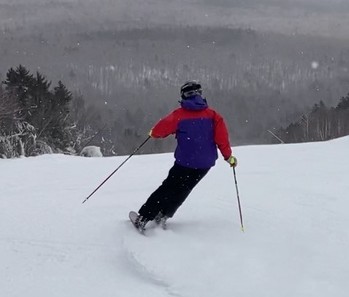
- Make sure your equipment fits and is in good shape. Often at the end of the prior season, the equipment gets put away in the basement/garage without inspecting its condition. Make sure your boots still fit. Get your skis tuned and bindings checked by a reputable ski technician.
- Get and wear a helmet! Not only important during falls/collisions, but if you enjoy the glades and woods, helmets can help prevent lacerations/abrasions from tree branches and other natural objects.
- Get your legs and core in shape! There is a lot you can do at home or in the gym with very little equipment to get your body ready for the season. Remember, skiing is like doing squats all day! Leg exercises that involve multidirectional movements that mimic common movement patterns seen in skiing can help functionally condition these muscles to absorb loads placed on the body.
Exercises to consider: squats, lunges, single-leg deadlifts, and lateral squats

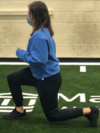
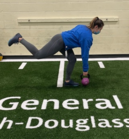
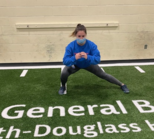
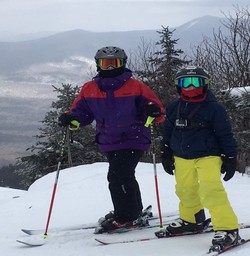 Remember, single leg strength and balance training exercises are essential as skiing requires transfer of weight from side to side. This single leg balance exercise with an over-head throw is another good one to add to your routine:
Remember, single leg strength and balance training exercises are essential as skiing requires transfer of weight from side to side. This single leg balance exercise with an over-head throw is another good one to add to your routine:
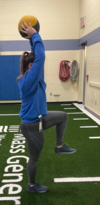 And don't forget your core! The core provides stabilization and force transfer, and a strong core aids in the upper-lower body separation needed to execute precise turns, keeping your trunk upright as your arms and legs move. For more reading, click here.
And don't forget your core! The core provides stabilization and force transfer, and a strong core aids in the upper-lower body separation needed to execute precise turns, keeping your trunk upright as your arms and legs move. For more reading, click here.
Cardiovascular training is equally important and often overlooked. General fatigue can develop after skiing for many hours, and this can impair your technique and may increase your risk for injury.
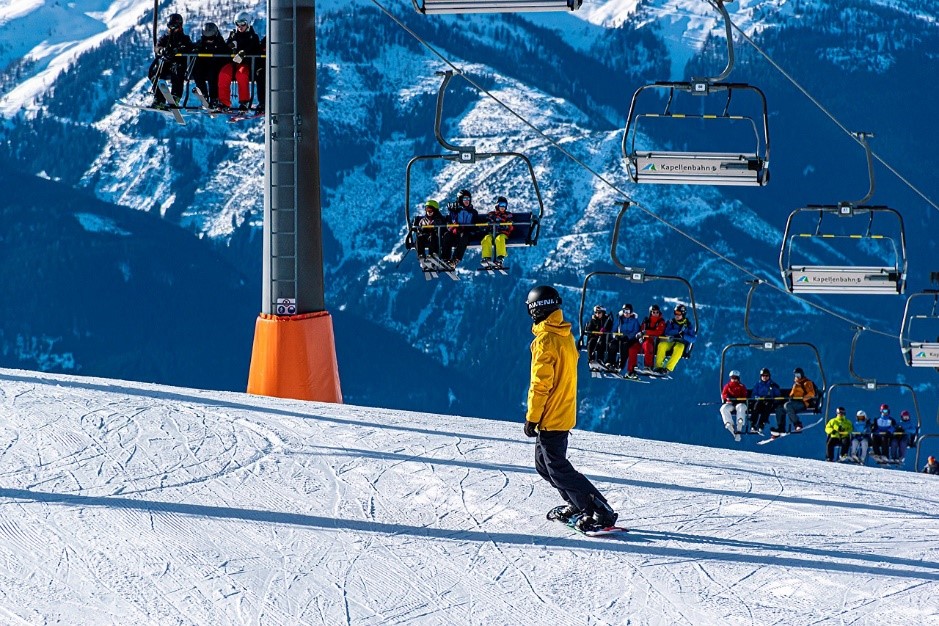
Once you arrive at the mountain, take a few minutes in the parking lot or the lodge to get your body ready. Here are a few ideas:
Mountain Warm-up
Dynamic Warm-up: (This should be done before putting on your ski boots)
- Walk up and down a few flights of stairs or if outside in the parking lot, take a 15 second brisk walk
- 5-10 squats
- 5-10 walking/static lunges
- 5-10 side shuffles
- 5-10 knee to chest
- 5-10 ankle grabs
- 10 heel raises on both feet
- 5-10 arm swings/” body hugs”
Stretches- all held for at least 30 seconds, each side. This is great for warm-up and cool-down at the end of the day.
Muscle groups to target: Hip Flexor, Quad, Calf, Hip/Buttock, and Hamstring
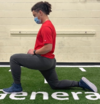


![]()

On the Slopes
- Take a lesson! Don’t rely on your buddies for instruction. Even the most seasoned skier can benefit from a lesson. Equipment and techniques change over time and a few tips could make your skiing experience more enjoyable.
- Take a few “warm up” runs on easier trails to test the conditions and get your “feet underneath you” and set the muscle memory in motion. If you have new equipment, it will give you a chance to make some adjustments if necessary.
- Ski “defensively” constantly scanning your surroundings so you can respond if someone unexpectedly turns across your intended path. Know your limits, ski within it!
- Stay hydrated! Remember, in cold conditions your body’s thirst response diminishes by about 40%. So, although hot chocolate, coffee or soda may be inviting, the most important liquid is water.
- As muscles fatigue, including your brain/decision making, they are not as effective and more prone to injury. When in doubt, don’t take “one more run” and you will most likely have a longer season of skiing.
- At the end of the day when you head to the lodge/car to take off your gear, take a little time to stretch before your ride home...quads, hip flexors, hamstrings, calves, and your lower back. A little time spent now will help your muscles recover.
Here’s hoping for a great snow season and countless hours on the slopes!
 Sara Richards is a physical therapist with Wentworth Douglass Hospital at Rehab Services in Lee. She received her Master of Science in Physical Therapy from the University of Colorado Health Sciences Center in Denver. Before beginning her career in physical therapy, she had the opportunity to work as a professional ski patroller at Winter Park Resort. Her combined passion for people and movement over the lifespan has allowed her to share her knowledge and help get her patients back on course.
Sara Richards is a physical therapist with Wentworth Douglass Hospital at Rehab Services in Lee. She received her Master of Science in Physical Therapy from the University of Colorado Health Sciences Center in Denver. Before beginning her career in physical therapy, she had the opportunity to work as a professional ski patroller at Winter Park Resort. Her combined passion for people and movement over the lifespan has allowed her to share her knowledge and help get her patients back on course.